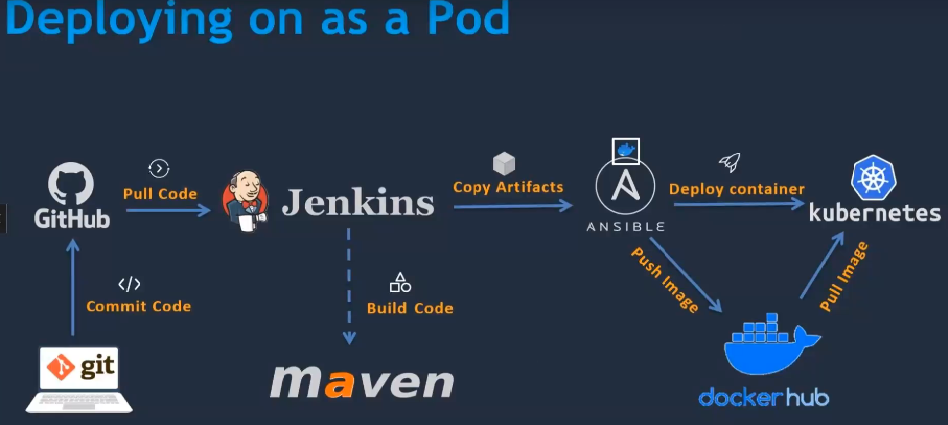According to a survey, 80–90 percent of organizations are evaluating Docker and Kubernetes and considering a move to a microservices architecture. In the future, all organizations will adopt and use Docker, Kubernetes, and microservices. If you are stuck in monolithic architecture development, I suggest you get out of it and start learning and implementing microservices-based architecture. This is the future demand and will be beneficial for your career as well. In this post, I am going to discuss all the tools, technologies, and steps needed to develop and deploy a microservice on the cloud. So, don’t miss this post; it could be useful for your next project.
Do you know how to develop and deploy a microservice?
Do you know how to build and test code using Jenkins?
Do you know what Poll SCM and Webhook methods are used for in creating a CI/CD pipeline?
Do you know what the Maven tool is and why it is used?
Do you know the role of Ansible in deploying an application?
Do you know the role of Docker in application development and deployment?
Do you know what a Kubernetes environment is and how to create a Kubernetes cluster to deploy an application using PODs?
Do you know what the Prometheus or Grafana tools are and why they are used?
If you do, that’s great! If not, don’t worry. I am going to explain everything in this post. Read the complete post, okay? It’s really interesting and may be helpful for your next project.
Suppose you need to develop a Java application and deploy it as a microservice on the AWS cloud using a CI/CD pipeline.
What tools, technologies, and steps are required to deploy the application as a POD on a Kubernetes cluster?
You need to follow these steps:
👉 Use Git and GitHub to commit and maintain the code.
👉 Use Jenkins and Maven to test and build the code using Poll SCM or webhooks to create a CI/CD pipline.
👉 Use Ansible to automate the process by writing playbooks like creating Docker images, pushing the Docker images to Docker Hub, and pulling the Docker images onto the Kubernetes cluster.
👉 Use a Kubernetes cluster to deploy the application on the server using PODs.
👉 Monitor the application using Prometheus or Grafana tools.
Do you think it’s an easy task?
No, it’s really not.
It took me almost a year to learn, understand, and implement these concepts fundamentally from scratch.
But now I have good news for you.
You don’t need to suffer and waste a whole year learning, understanding, and implementing these things.
How about if I teach you all these concepts in just 90 days?
Sounds interesting, doesn’t it?
Book a 30-minute FREE discovery call with me to learn more about the “90 Days DevOps Mastery Program” or DM me.
